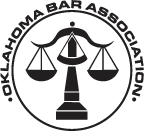
On May 22, 2018, the Missouri Supreme Court held in Casey v. E.J. Cody Company, Inc., the insurance company at time of employee’s diagnosis is the insurer liable for enhanced benefits under §287.200.4.The Court also held that §287.200.4 was not a retroactive law and was, therefore, constitutional.
About Casey
In Casey, the Employee was exposed to the hazards of asbestos through his work with the Employer as a floor tile installer.
Twenty-four years after retiring from the Employer, the Employee was hospitalized and diagnosed with mesothelioma. Subsequently, he filed a workers’ compensation claim against the Employer.
At hearing, the Employee stipulated that he was only seeking benefits under §287.200.4, which became effective January 1, 2014.
Section §287.200.4 provides for Enhanced Remedy benefits for mesothelioma cases.
The Employee did not raise the issue of liability for traditional occupational disease benefits.
The Employer stipulated that it had elected mesothelioma coverage under the statute through its insurance carrier and Insurer provided a policy covering Employee’s date of diagnosis.
The ALJ held that the last exposure rule applied to cases brought under §287.200.4 and held the Insurer at the time of Employee’s diagnosis liable for the enhanced benefits of $521,545.44.
The Employer and Insurer appealed the decision to the Commission, who affirmed the opinion.
The Court of Appeals determined jurisdiction was proper at the Supreme Court.
Supreme Court Arguments
At the Supreme Court, the Employer and Insurer argued that the application of §287.200.4 violated the Missouri Constitution’s prohibition against retroactive laws.
Furthermore, the Insurer alleged it could not be liable for benefits under the last exposure rule and the Employer challenged the sufficiency of Employee’s evidence.
What The Missouri Supreme Court Decided
In its decision, the Supreme Court explained that the triggering occurrence in cases involving §287.200.4 was the filing of a claim because, per policy language, the Insurer would cover “all liability arising out of all mesothelioma claims filed on or after January 1, 2014.” The Court stated that the Insurer at the time the claim was filed in February 2015, was the insurer liable for enhanced benefits because they agreed to cover the “additional benefits” for mesothelioma claims filed on or after January 1, 2014.
The Court held that the last exposure rule was immaterial in cases where there was an entitlement to the enhanced benefit under §287.200.4. The decision noted that the endorsement explicitly covered benefits under §287.200.4 without any language as to the date of last exposure and coverage limits. Rather, the Court pointed out that the only condition listed in the endorsement was that it would apply to claims filed after January 1, 2014.
The Supreme Court further held that §287.200.4 was not a retroactive law since the Insurer agreed to provide enhanced benefits. The Court determined that the statute did not create any new duty related to past transactions but, instead, provided “additional benefits for new claims under the new law.”
What Does This Mean?
The Casey decision allows the mesothelioma cases to continue Enhanced Remedy benefits in MO. It did not find the 2014 statutory changes creating the Enhanced Remedy benefits to be unconstitutional.
It also found the insurance carrier on the date the diagnosis of mesothelioma occurred to be held liable for the Enhanced Remedy benefits despite that carrier never providing coverage for the employer when the claimant worked for the employer.
There may be some unintended consequences from this case.
One main concern is that the Supreme Court reiterates that the Enhanced Remedy benefit does not fall under the last exposure rule like the traditional benefits for mesothelioma claims. This raises the issue of whether any employer that exposes the Claimant to asbestos can be liable for Enhanced Remedy benefits. Employers and Insurance Carriers had been operating under the impression that it was the last employer to expose the Claimant to the asbestos that would face liability for both traditional benefits and Enhanced Remedy benefits.
The issue of which employer was the last to expose the Claimant to asbestos was not litigated in Casey. Therefore, it is still possible that the last employer to expose the Claimant to asbestos when there are multiple employers exposing the Claimant is still liable for Enhanced Remedy benefits in addition to traditional benefits, but we will not know for sure until that issue gets litigated. At this time all employers brought into the workers’ compensation claim will need to prove not only are they not the last employer to expose the Claimants to asbestos, but also, they did not expose the Claimants to asbestos in their employment.
Future Decisions
Hegger v. Valley Farm Dairy Co., 2017 WL 6501762 (Mo. Lab. Ind. Rel. Com.) is being appealed to the Eastern District Court of Appeals. That case held that an employer who no longer existed at the time of diagnosis could not be liable for enhanced benefits under §287.200.4.
It will be interesting to see how the Commission continues to enforce §287.200.4 as it prepares to take on the appeal of Marc Hayden v. Cut Zaven Ltd., and Papillion Ltd., Injury No.: 14-103077, which is the first case that requires the application of both the enhanced benefit and traditional benefits to a claim of occupational disease due to toxic exposure diagnosed to be mesothelioma.







